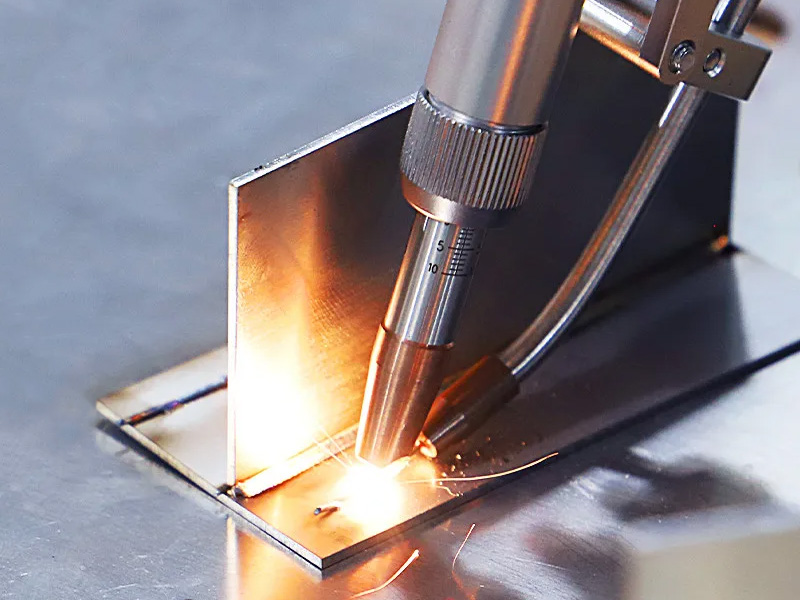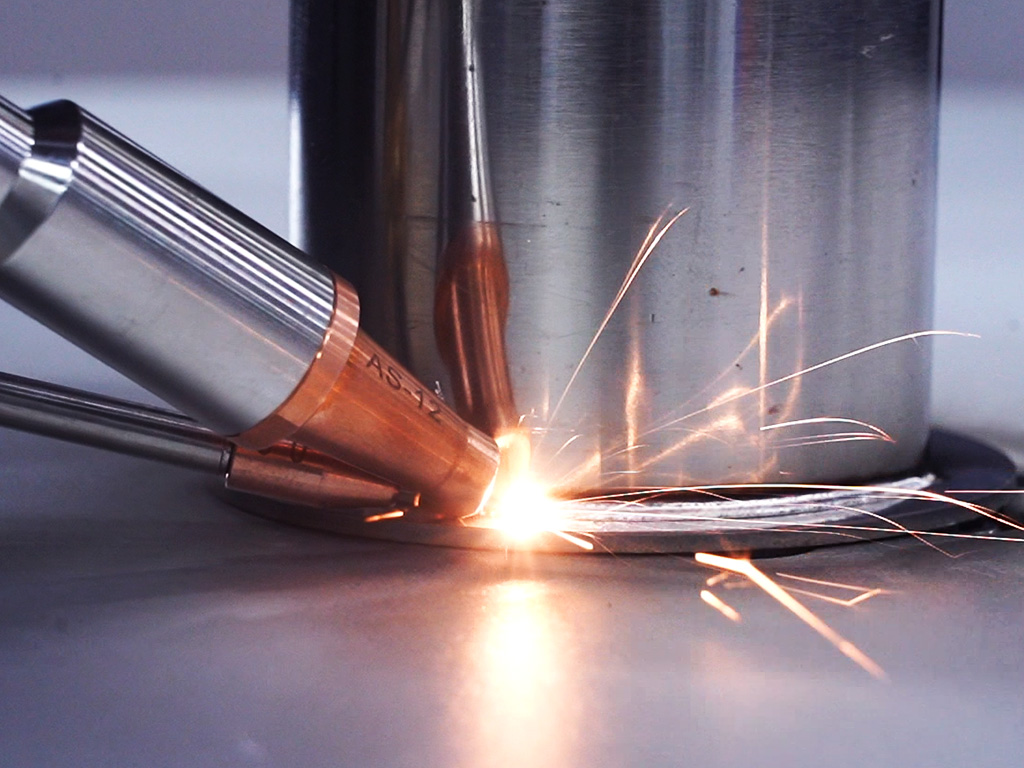This article tells you the definition, principle, sturdiness, limitations, pros and cons of laser welding, as well as its comparison with MIG and TIG welders.
In the industry of welding, laser welding is considered a strong and sophisticated method of joining process. It utilizes highly concentrated light beams called lasers. On the targeted surface of the material, the laser beam creates intense heat on the contact point and causes the material to melt and form a strong bond as it cools and solidifies.
Laser welding comes with both its advantages and disadvantages. Comparing other welding processes like MIG or TIG, laser welding is stronger. Today, we are going to learn about laser welding, its strengths and limitations, usability, and so on. We will also compare laser welding with several welding methods in this article.
So, let’s dive into the world of laser welding.
What is laser welding?
Laser welding is the welding method that uses focused laser beams of high heat to melt the metal surface. Melted parts then join and solidify after cooling down. Like any other laser machinery, laser welding machines also utilize some specific elements of lasers including solid-state lasers, gas lasers (CO2 lasers), and diode lasers.
High-quality welding with minimal distortion and heated zone makes it a good choice for a wide range of welding projects.
There are other welding processes such as gas metal arc welding (GMAW/MIG), gas tungsten arc welding (GTAW/TIG), shielded metal arc welding (Stick), flux-cored arc welding, submerged arc welding, resistance spot welding, and electron beam welding.
Laser welding in particular is the most practical and versatile among all.

How does it work?
Laser welding uses high-concentrated focused laser beams to heat the metal surface to melt. After joining the parts they are left for cooling until they get solidity.
The user information is given below step by step.
1. Beam generation: The welding process begins with the generation of a high-powered laser beam. Different types of lasers, such as solid-state lasers, gas lasers (e.g., CO2 lasers), or diode lasers, may be used depending on the application requirements.
2. Beam focusing: Then the laser beam is directed to the focused point using mirrors and lenses. Efficient heating and melting of the materials greatly depend on the accuracy of the focus point and temperature.
3. Material preparation: Before starting the welding process, material preparation is a must. This includes cleaning, clamping, and surface treatment.
4. Welding process: Focus the laser beams on the prepared surface of the material. The directed point of the surface melts with the concentrated heat of the laser.
5. Weld formation: The molten materials fuse and form a solid joint. To enhance joint strength and fill gaps additional filters may be used.
6. Cooling and solidification: Once the welding is complete, the molten materials rapidly cool and solidify, forming a solid bond between the joined surfaces. To minimize distortion proper cooling control is very important.
7. Post-weld inspection: Inspect the welding for quality and integrity. Additional finishing processes such as grinding, polishing, or coating may be required depending on the welding finish.
Is laser welding strong?
Yes, laser welding is considered a strong and reliable welding technique. The reasons behind laser welding being a strong welding process are given below.
• Precision and Control
Precise control over welding parameters like power, speed, and focus allows consistent welding and material properties to be maintained. This results in strong weld joints.
• Minimal Heat-Affected Zone (HAZ)
The concentrated beams result minimum heat-affected zone. This reduces the thermal distortion, residual stresses, and weakening of the material. Consequently, the mechanical properties of the welded joint are often superior to those achieved with other welding methods
• Deep Penetration
Laser welding can achieve deep penetration with a high aspect ratio. Welding in thick materials becomes more accessible for that. It enhances the structural integrity of the joint.
• High Energy Density
The high energy density ensures efficient melting and fusion of the materials. This results in a strong metallurgical bond. This high energy density also enables the welding of steel and non-ferrous alloys.
• Non-contact Process
Laser welding minimizes physical deformation and contamination of the welded materials since it is a non-contact welding method.
Pros and Cons
Laser welding is a versatile and useful process for a wide range of welding jobs. Yet, sometimes it fails to provide the necessary output comparing some other welding methods. Let’s take a look at the strengths and shortcomings of laser welding side by side.
| Pros | Cons |
|---|---|
| Allows for highly accurate and controlled welding, ideal for intricate and delicate parts | The initial investment for laser welding equipment is relatively high compared to traditional welding methods |
| Can weld a wide variety of materials, including metals, plastics, and dissimilar materials | May not be suitable for very thick materials or those with highly reflective surfaces, which can reflect or scatter the laser beam |
| Reduces thermal distortion and material damage, preserving the mechanical properties of the surrounding material | The line-of-sight nature of the laser beam restricts its use in welding joints that are not easily accessible or have complex geometries |
| Capable of high-speed welding, which increases productivity and reduces manufacturing time | |
| Achieves strong welds in thick materials with high aspect ratios, often in a single pass | |
| Easily integrated into automated manufacturing systems, improving efficiency and consistency |
How to overcome the limitations of laser welding!
Laser welding can be a great opportunity if utilized in the right manner. Yes, it comes with certain limitations but you can overcome most of them. So, how to do that?
High equipment cost
• Perform a thorough cost-benefit analysis. Consider the long-term savings from increased productivity.
• Explore financing or leasing options.
• Start with the minimum investment on the machine. Gradually increase the investment.
Material limitations
• Use coatings or surface treatments on reflective materials. This will enhance laser absorption and reduce reflection issues.
• Optimize laser parameters to better suit the material properties and thickness.
• Combine laser welding with other welding methods (such as MIG or TIG).
Limited joint accessibility
• The use of robotic arms and automated systems will give access to hard-to-reach joints.
• Design custom fixtures and jigs.
• Employ multi-axis laser welding systems
Additionally, gradual implementation of existing products, conducting compatibility assessment, and starting pilot projects can enhance the efficiency of the machine and reduce the limitations noticeably.

Laser Welding VS MIG
| Features | Laser Welding | MIG |
|---|---|---|
| Heat Source | Laser beam | Electric arc |
| Precision | Very high | Moderate |
| Heat-Affected Zone | Minimal | Larger |
| Welding Speed | High | Moderate to low |
| Penetration | Deep, often single-pass | Good, may require multiple passes |
| Material Compatibility | Wide range, including difficult-to-weld | Wide range, common metals |
| Spatter | Minimal to none | Generates spatter |
| Equipment Cost | High | Lower |
| Skill Requirement | High, specialized training needed | Moderate, easier to learn |
| Joint Accessibility | Requires line-of-sight | More flexible |
| Automation | Easily automated | Less easily automated |
| Safety | Significant hazards from high-powered lasers | Requires precautions but is generally safer |
Laser Welding VS TIG
| Aspects | Laser Welding | TIG Welding |
|---|---|---|
| Precision and Control | Extremely high precision, ideal for intricate and automated processes | High precision with manual control, ideal for detailed and high-quality welds |
| Heat-Affected Zone (HAZ) | Minimal HAZ, reducing thermal distortion and preserving material properties | Minimizes HAZ, but not as much as laser welding |
| Speed | High-speed welding increases productivity | Slower welding speeds reduce productivity |
| Versatility | Suitable for a wide range of materials, including metals, plastics, and dissimilar materials | Excellent for various metals, especially non-ferrous, but less versatile with plastics |
| Skill Requirement | Requires specialized training and expertise | Requires significant skill and experience for best results |
| Cost | High initial equipment cost | Moderate equipment cost, higher than some other methods |
| Application | Ideal for high-precision, automated, and high-volume production applications | Best for high-quality welds and manual control, such as in aerospace, automotive, and artistic metalwork |


